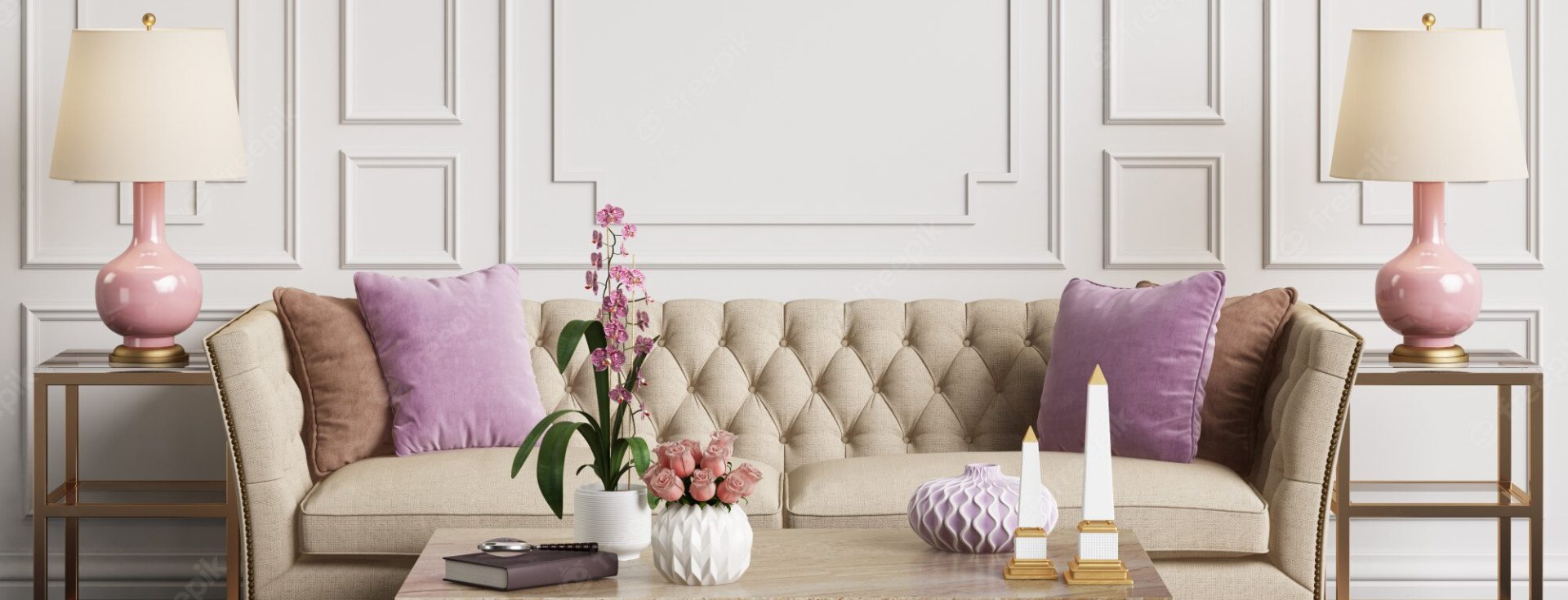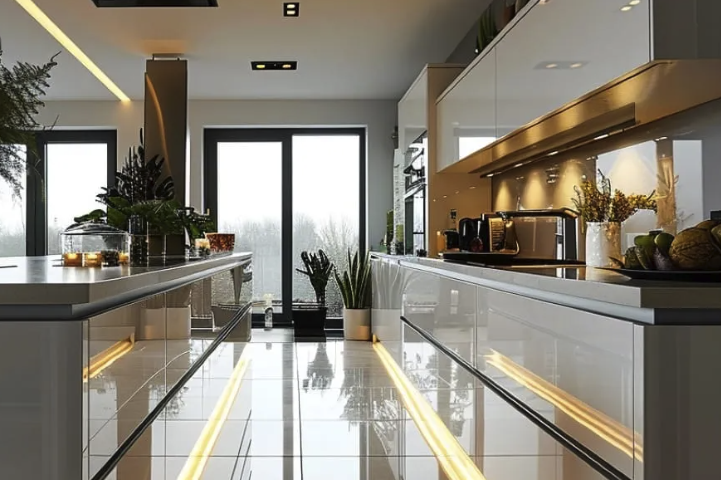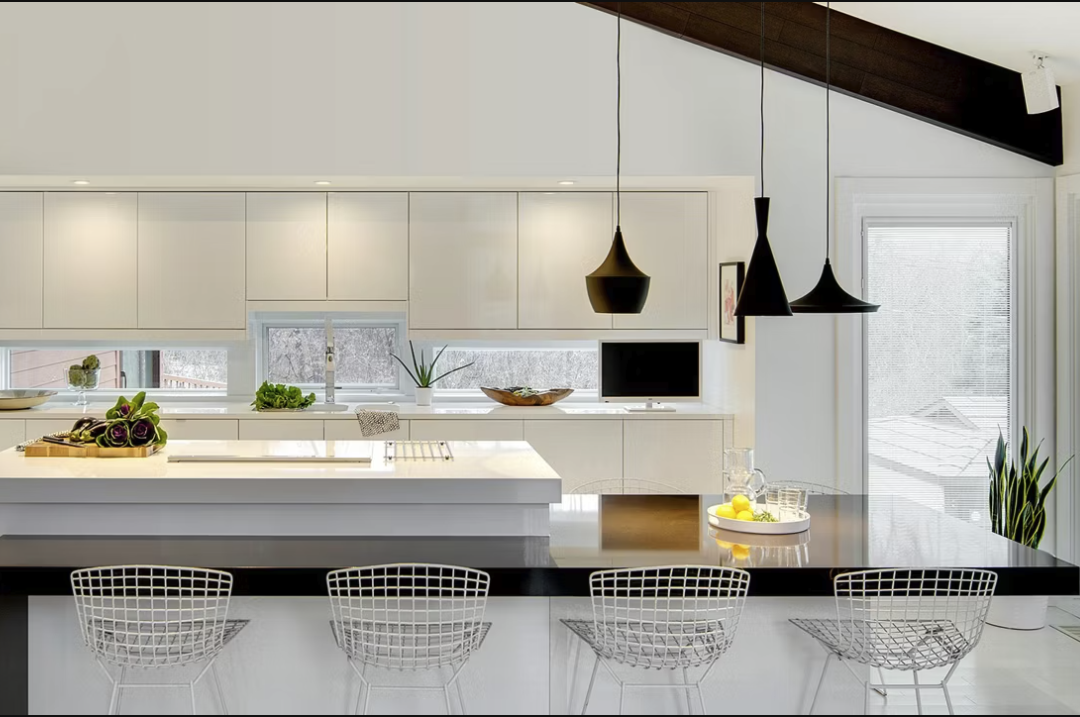Pendant lights Aluredesign are a versatile lighting solution commonly used in kitchens. They hang from the ceiling using a rod, chain, or cord and are available in various styles, shapes, and sizes. These fixtures can illuminate specific areas like kitchen islands or dining tables while also serving as decorative elements.
Pendant lights are adaptable to both modern and traditional kitchen designs, making them popular among homeowners and interior designers. The materials used in pendant lights include glass, metal, and fabric, offering numerous design options. They cater to diverse aesthetic preferences, from minimalist to ornate styles, complementing various kitchen designs.
Beyond their visual appeal, pendant lights provide focused task lighting, which is beneficial for food preparation and cooking activities. When properly placed and installed, pendant lights can enhance both the functionality and aesthetics of a kitchen space, meeting practical lighting needs while contributing to the overall design scheme.
Choosing the Right Pendant Lights for Your Kitchen
Kitchen Size and Layout
The size of your kitchen and the specific area where you plan to install the pendant lights are vital considerations. For instance, a large kitchen with a spacious island may benefit from multiple larger pendant lights to provide ample lighting and make a bold statement. On the other hand, smaller kitchens or narrow islands may require smaller pendant lights or a single larger light to avoid overwhelming the space.
Style and Design
The style and design of the pendant lights are also essential factors to consider. It’s vital to choose lights that complement the overall aesthetic of your kitchen, whether it’s modern, industrial, farmhouse, or traditional. Consider the materials, finishes, and shapes of the pendant lights to ensure they harmonize with your existing decor and fixtures.
Lighting Needs
Finally, think about the type of lighting you need. If you’re primarily using the pendant lights for task lighting, such as over the kitchen island for food preparation, you may want to opt for brighter, more focused lighting. However, if you’re using the pendant lights to create ambiance or accentuate certain areas of the kitchen, you may prefer softer, dimmable lighting options.
Placement and Installation Tips
Proper placement and installation of pendant lights are crucial to achieving both functional and aesthetic benefits in your kitchen. When determining the placement of your pendant lights, consider the height of your ceiling, the size of the space, and any potential obstructions such as cabinets or ventilation hoods. For example, if you have a standard 8-foot ceiling, pendant lights should typically be hung around 30-36 inches above the surface of the island or table to provide ample lighting without obstructing views or causing glare.
If you have higher ceilings, you may need to adjust the height accordingly to maintain proper scale and proportion. When it comes to installation, it’s important to ensure that the pendant lights are securely anchored to the ceiling to prevent any accidents or damage. If you’re not comfortable with electrical work, it’s best to hire a professional electrician to install the pendant lights safely and correctly.
Additionally, consider using dimmer switches to control the brightness of the pendant lights and create different moods in your kitchen. Dimmers allow you to adjust the lighting levels based on the time of day or specific activities, such as cooking, entertaining, or relaxing. By carefully considering placement and installation, you can maximize the impact of your pendant lights while ensuring safety and functionality in your kitchen.
Popular Styles and Designs of Pendant Lights
Pendant lights come in a wide array of styles and designs to suit various kitchen aesthetics and personal preferences. One popular style is the industrial pendant light, characterized by its raw materials such as metal and exposed bulbs. Industrial pendant lights often feature sleek lines and minimalist designs, making them a great choice for modern and contemporary kitchens.
They can add a touch of urban chic and edgy sophistication to your space while providing ample task lighting for food preparation and cooking. For those with a more traditional or rustic kitchen design, farmhouse-style pendant lights are an excellent option. These lights typically feature distressed finishes, natural materials like wood or wicker, and classic silhouettes such as lanterns or bell-shaped shades.
Farmhouse pendant lights can add warmth and charm to your kitchen while complementing other rustic elements like wooden cabinetry and farmhouse sinks. They create a cozy and inviting atmosphere that is perfect for family gatherings and casual meals. If you prefer a more glamorous and luxurious look in your kitchen, consider crystal or glass pendant lights.
These lights feature sparkling crystals or elegant glass shades that reflect light beautifully and add a touch of sophistication to any space. Crystal or glass pendant lights are perfect for creating a sense of opulence and grandeur in your kitchen while providing soft, ambient lighting that enhances the overall ambiance.
How to Use Pendant Lights to Enhance Your Kitchen’s Aesthetic
Pendant lights can be used strategically to enhance the aesthetic appeal of your kitchen while providing functional lighting. One effective way to use pendant lights is to create visual interest and focal points in the space. For example, if you have a large kitchen island, consider installing a row of pendant lights above it to draw attention to this central gathering area.
Choose lights that complement the style of your kitchen while making a statement, such as oversized industrial pendants for a modern look or elegant glass pendants for a more refined aesthetic. Another way to enhance your kitchen’s aesthetic with pendant lights is to use them to highlight specific design elements or architectural features. For instance, if you have open shelving or a decorative backsplash, strategically placing pendant lights above these areas can draw attention to them and showcase their beauty.
This not only adds visual interest but also creates a cohesive and well-designed look in your kitchen. Additionally, consider using pendant lights to create layers of lighting in your kitchen. In addition to overhead lighting, incorporate pendant lights at different heights and locations to provide task lighting for specific areas such as the sink, stove, or dining table.
This not only improves functionality but also adds depth and dimension to your kitchen’s lighting design.
Maintenance and Care for Pendant Lights
Cleaning Your Pendant Lights
To keep your pendant lights looking their best, regular cleaning is essential. Use a soft cloth or duster to gently wipe down the exterior of the pendant lights, being careful not to damage any delicate materials such as glass or crystals. For glass or crystal pendant lights, consider using a glass cleaner or mild soap and water solution to remove any smudges or fingerprints that may dull their sparkle. Be sure to dry the fixtures thoroughly after cleaning to prevent water spots or streaks from forming.
Inspecting Electrical Components
In addition to cleaning, it’s essential to inspect the electrical components of the pendant lights periodically to ensure they are in good working condition. Check for any loose wires, frayed cords, or signs of wear and tear that may indicate potential safety hazards. If you notice any issues with the electrical wiring or components, it’s best to contact a qualified electrician for repairs or replacements.
Maintaining Optimal Lighting Performance
To maintain optimal lighting performance in your kitchen, consider replacing any burnt-out bulbs promptly. Be sure to use the correct type and wattage of bulbs recommended by the manufacturer to prevent damage to the fixtures and ensure consistent lighting quality.
Budget-Friendly Options for Pendant Lights
If you’re working with a limited budget but still want to incorporate pendant lights into your kitchen design, there are several budget-friendly options available that offer style and functionality without breaking the bank. One cost-effective option is to look for affordable pendant light fixtures at home improvement stores or online retailers. Many retailers offer a wide selection of stylish pendant lights at various price points, allowing you to find options that fit within your budget while still meeting your design preferences.
Another budget-friendly approach is to consider DIY pendant light projects. With some creativity and basic handyman skills, you can repurpose existing materials or household items into unique pendant light fixtures. For example, you can use mason jars, wire baskets, or even old wine bottles as shades for pendant lights.
By customizing your own pendant lights, you can achieve a personalized look that adds character and charm to your kitchen without spending a fortune. Additionally, consider exploring thrift stores, flea markets, or garage sales for secondhand pendant light fixtures that can be refurbished or updated with a fresh coat of paint or new hardware. With some minor adjustments and creative touches, you can transform pre-loved pendant lights into stylish additions to your kitchen at a fraction of the cost of brand-new fixtures.
In conclusion, pendant lights are versatile and stylish lighting options that can enhance both the functionality and aesthetic appeal of your kitchen. By carefully considering factors such as size, style, placement, and maintenance, you can select the right pendant lights for your space and enjoy their benefits for years to come. Whether you prefer industrial chic, farmhouse charm, or glamorous elegance, there are pendant light options available to suit every taste and budget.
With proper installation and care, pendant lights can elevate your kitchen design while providing essential task lighting for cooking and entertaining.





